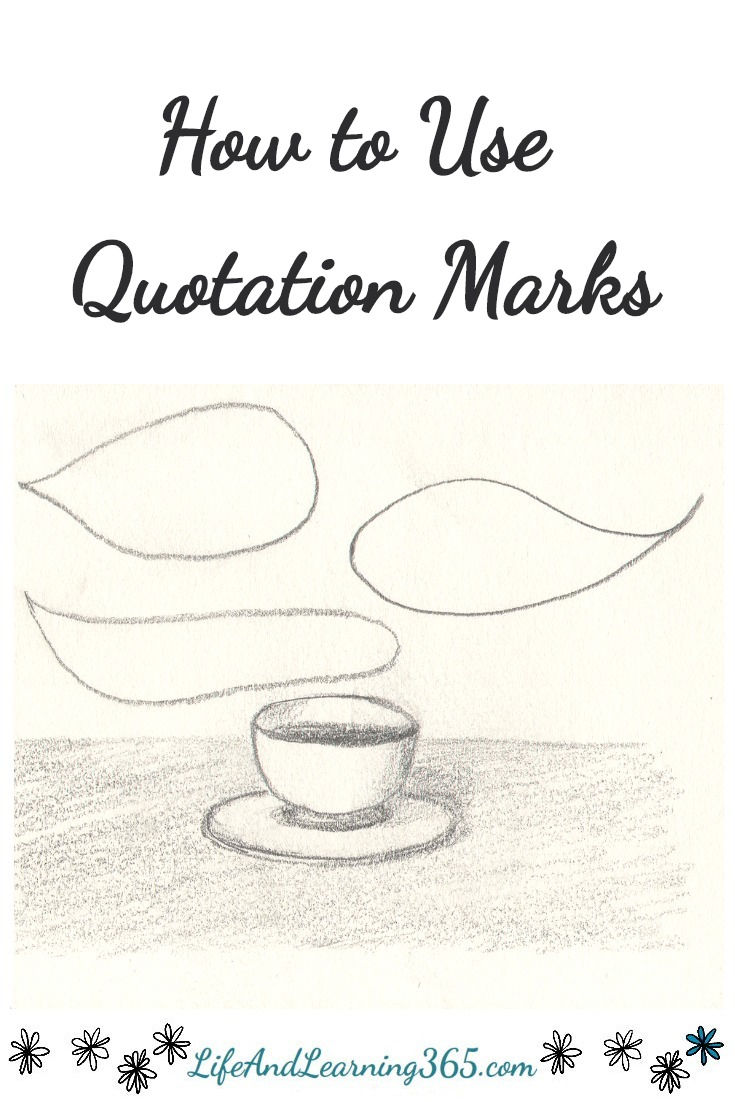How to Use Quotation Marks
- Becky

- Apr 21, 2020
- 3 min read
Updated: Jun 25, 2020

Comic books and graphic novels make it clear who is saying what. Speech bubbles are not what we usually use when writing, but we do have other tools that make someone’s words distinctly theirs.
Let’s try this short encounter. Unfortunately it is all in one line, with no speech bubbles and no quotation marks to help.
Is the tea still hot? No. Would you like me to warm it up? That would be great! Thank you.
Can you tell who said what? Jasmine is asking a question. Blaire is responding. How could we make this clearer?
Yes, speech bubbles would be great. New lines for each speaker make all the difference. I think colors would help as well. Here we go.
Is the tea still hot?
No. Would you like me to warm it up?
That would be great! Thank you.
Things are a bit clearer. Do you know who the speakers are? What can we do to fix that?
Jasmine: Is the tea still hot?
Blaire: No. Would you like me to warm it up?
Jasmine: That would be great! Thank you.
That style might work for a script, but when writing we can use quotation marks. Let’s try this again.
Jasmine asked, “Is the tea still hot?”
Blaire replied, “No. Would you like me to warm it up?”
Jasmine answered, “That would be great! Thank you.”
The quotation marks can function like the speech bubbles in graphic novels. Quotation marks curve in toward the words being said. (I think of it like they are circling the stated words like mini pieces of a speech bubble.)
In the conversation about there are words that tell us who was speaking and the quotation marks identify what they specifically said. Notice how a comma set apart the telling words before the direct quote began. Now that we have that established, we can spice things up a little.
“Is the tea still hot?” Jasmine asked.
“No,” Blaire replied, “Would you like me to warm it up?”
Jasmine answered, “That would be great! Thank you.”
It is still clear who is saying which part, but the telling words are in different places.
When working on this with students, I might ask them to underline the telling words. My favorite way to have students check to see if they have used quotation marks correctly is to use walkie-talkies. Press down on the walkie-talkie while saying the part in the quotation marks and let go of the button when not. Sometimes that activity makes things click with quotation marks.
When Quoting a Quote
What happens when you are quoting what someone else said? Let’s add another character to our story. Imagine that Greg overheard the girls and wants to see what’s going on.
“What did Jasmine ask?” Greg questioned.
“She asked, ‘Is the tea still hot?’” Blaire replied. “I’m warming it up for her. Would you like some as well?”
Greg said, “No, I’m having coffee, but thank you for offering.”
Since Blaire is directly quoting Jasmine, a single quotation mark is used at the start and finish of what Jasmine said. A quote inside a quote uses single line quotation marks. Of course Blaire doesn’t need to say what Jasmine said word for word. Here’s another way this could be written.
“What did Jasmine say?” Greg asked.
“She wanted to know if the tea is still hot.” Blaire replied. “I’m warming it up for her. Would you like some as well?”
Greg said, “No, I’m having coffee, but thank you for offering.”
In this situation Blaire simply summarized what Jasmine said, the single quotation marks are not as a result.
That's how quotation marks work. They are a useful tool for writing dialogue.
Question to Ponder:
In writing, what tools do you used to help people know who said what?







Comments